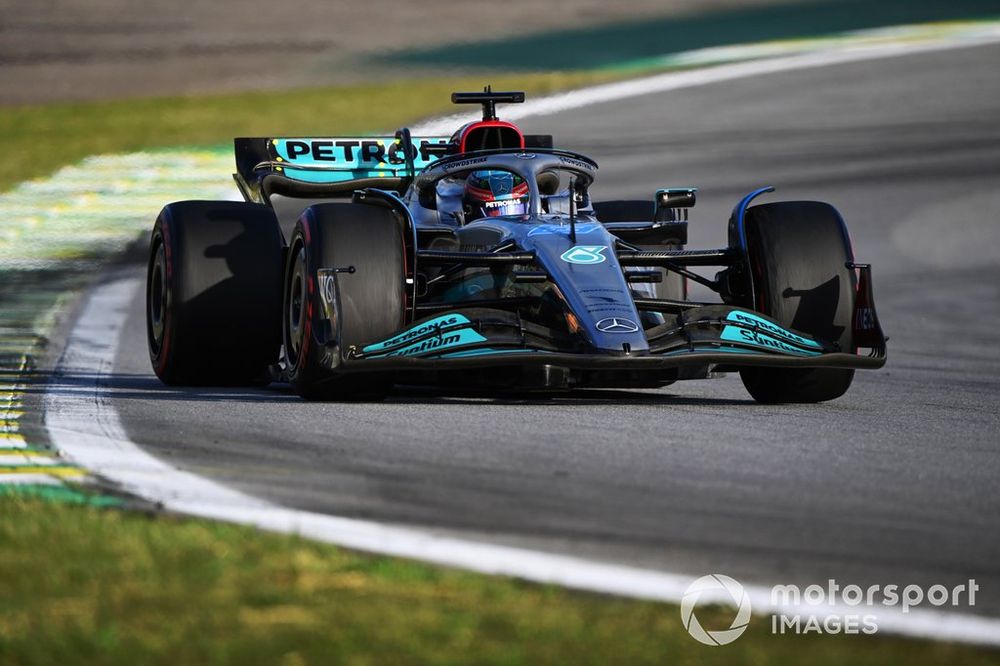A new chassis, new front and rear suspension, new gearbox and honed aerodynamics and sidepods will be the most visual changes to its heavily revised challenger.
In Formula 1, though, the devil is in the detail, and it will be in areas nigh on impossible to spot – like the underfloor, its aero platform concept and its ride height – where the biggest revolution will have taken place.
For the true story of what Mercedes got wrong with its previous two ground effect cars was not about topics that become major talking points – like its infamous zeropods or the seating position of drivers.
It was far more related to concepts relating to ride height – something that you cannot really observe from the outside.
As Mercedes technical director James Allison explained: “We placed value on the wrong things.”
The Goldilocks answer
Mercedes’ issues can be traced back to the horrendous porpoising that its W13 suffered from in 2022, with a car that delivered its peak downforce in an area so close to the ground where bouncing became a problem.
However, lifting the car did not help much as it found itself losing too much performance, backing itself away from low ride heights.
It eventually got on top of the issues at play and did stage a good recovery throughout that campaign to find downforce higher up, winning the 2022 Brazilian Grand Prix, and that gave it some confidence that the worst was behind it.
Photo by: Mark Sutton / Motorsport Images
George Russell’s win at Interlagos gave Mercedes confidence that its initial design could be successful
Heading into last year, though, the enforced raising of the floor edges by 15mm meant that there was a critical decision to be made.
As Allison explained: “There was a big debate internally: should we cash in that 15mm and drop the car down, operate in a window that’s 15mm smaller because the cars will be less bouncy inherently? Or should we do more of what has done us well over the course of the [previous] year, which is force ourselves to keep looking for downforce where it’s difficult: high up?
“The debate raged internally for a while and the logic was sort of like this: it’s very hard to predict, because the tools [F1 teams can use] are not especially good for this, where bouncing is going to be incurred.
“It’s much harder to back yourself out of having driven off the end of a cliff and finding yourself bouncing, than it is to be too high,…
Click Here to Read the Full Original Article at Motorsport.com – Formula 1 – Stories…

